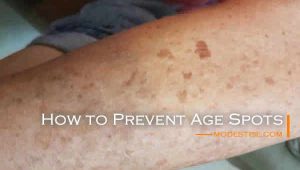Exercise is a key factor towards better health. Combined with a balanced diet, there is no better way to stay in tip-top shape. However, there are details that are often ignored. One is having sufficient vitamin D.
However, there are the details that are often ignored. One is having sufficient vitamin D. In today’s article, we will explore how Vitamin D and sunlight are instrumental to optimal health.
Why is Vitamin D Important?
Vitamin D improves the body’s efficiency in absorbing vitamins and nutrients (particularly calcium and phosphorus), strengthen bones and overall boosts the immune system.
Like all other vitamins and minerals, there is a certain minimum amount that our body needs so if vitamin D falls below the threshold, all sorts of illnesses will creep in such as frequently getting sick, bone loss, fatigue, and so on.

Sources of Vitamin D
Most of us will assume the main source is via food such as fish (cod, salmon, tuna, mackerel), beef liver, and egg yolk.
Unfortunately, we like to take the easier route which is through supplements. Both are viable options but a bigger question remains. How does the body absorb vitamins and minerals when it does not have enough vitamin D to help out?
When it comes to this chicken and egg situation, nature is here to help. There is another way and best of all, it is entirely free with little effort!
When sunlight hits the human skin, vitamin D is generated within the body through a chemical reaction where the sun’s ultraviolet B reacts with the cholesterol in the skin cells to produce vitamin D.
Other Benefits of Sunlight
Other than vitamin D production, research shows that sunlight elevates the mood by encouraging the production of the happy hormone serotonin and stimulate the body to produce melatonin in the night to assist in a good night’s sleep.
Regular exposure to sunshine helps to keep our biological clock ticking with the right rhythm.

Hazard Warning
While it is beneficial, it is also dangerous when humans are exposed to the sun for too long.
Overdose of ultraviolet is a major cause of skin cancer and cataracts, for example. Depending on which part of the world you are at, be wary at what time of the day the UV is the strongest.
As a general rule of thumb, do not stand under the sun when it is directly above because there is less ozone to filter out the bad UV.
The morning sun is often the best because it is at an angle so that sunlight has to pass through more of the ozone layer. Besides, the air is fresher and we are generally more energetic at this time of the day.
Combine this with at least a ten to thirty minutes walk/jog/any other outdoor exercises and you will gain the most optimum results.
By the way, it is not necessary to overdo things. Ten to thirty minutes of exposure to the morning sun for two to three times a week is sufficient for most people.
One important note is that since sunscreen prevents UV exposure, it is counterproductive if you apply it too early. So only spread sunscreen on the body if you plan to stay under the sun longer than, say fifteen minutes?

Conclusion
Do not underestimate the role of the sun and vitamin D. Without the two, all the world’s supplements become less effective.

The best way is to spend around ten to thirty minutes out in the morning sun taking a walk or doing some exercise. You will get the benefits of self-generated vitamin D together with a stronger mind and body.
This is especially important to those who have a sedentary work life sitting at a desk facing a computer for eight or more hours a day. So take care, rise and shine!
SEE ALSO:





